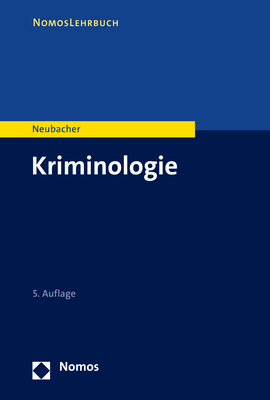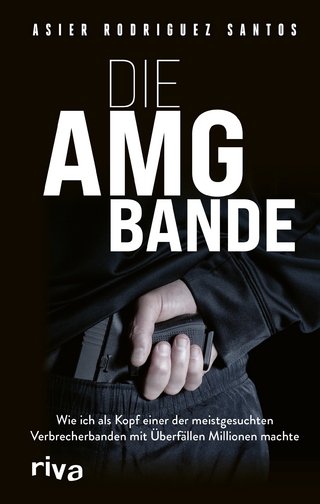
Routledge International Handbook of Visual Criminology
Routledge (Verlag)
978-1-138-88863-0 (ISBN)
Dynamically written and richly illustrated, the Routledge International Handbook of Visual Criminology offers the first foundational primer on visual criminology. Spanning a variety of media and visual modes, this volume assembles established researchers whose work is essential to understanding the role of the visual in criminology and emergent thinkers whose work is taking visual criminology in new directions.
This book is divided into five parts that each highlight a key aspect of visual criminology, exploring the diversity of methods, techniques and theoretical approaches currently shaping the field:
• Part I introduces formative positions in the developments of visual criminology and explores the different disciplines that have contributed to analysing images.
• Part II explores visual representations of crime across film, graphic art, documentary, police photography, press coverage and graffiti and urban aesthetics.
• Part III discusses the relationship of visual criminology to criminal justice institutions like policing, punishment and law.
• Part IV focuses on the distinctive ethical problems posed by the image, reflecting on the historical development, theoretical disputes and methodological issues involved.
• Part V identifies new frameworks and emergent perspectives and reflects upon the distinctive challenges and limits that can be seen in this emerging field.
This book includes a vibrant colour plate section and over a hundred black and white images, breaking down the barriers between original photography and artwork, historic paintings and illustrations and modern comics and films. This interdisciplinary book will be of interest to criminologists, sociologists, visual ethnographers, art historians and those engaged with media studies.
Michelle Brown is Associate Professor of Sociology at the University of Tennessee, USA. Eamonn Carrabine is Professor of Sociology at the University of Essex, UK.
Introducing Visual Criminology, Michelle Brown and Eamonn Carrabine
Part I: Foundations – History, Theory Methods
Law, evidence and representation, Katherine Biber
Social science and visual culture, Eamonn Carrabine
"We never, never talked about photography": Documentary photography, visual criminology, and method, Jeff Ferrell
Crime films and visual criminology, Nicole Rafter
Key methods of visual criminology: An overview of different approaches and their affordances, Luc Pauwels
Visions of legitimacy: Public criminology, the image and the legitimation of the carceral state, Jonathan Simon
Carceral geography and the spatialization of carceral studies, Dominique Moran
Art and its unruly histories: Old and new formations, Eamonn Carrabine
Part II: Images and Crime
Making the criminal visible: photography and criminality, Jonathan Finn
Documentary criminology: A cultural criminological introduction, Keith Hayward
Going feral: Kamp Katrina as a case study of documentary criminology, David Redmon
Mediated suffering, Sandra Walklate
Media, popular culture and the lone wolf terrorist: The evolution of targeting, tactics and violent ideologies, Mark Hamm and Ramón Spaaij
Representing the pedophile, Steven Kohm
Street art, graffiti and urban aesthetics, Alison Young
Risky business: Visual representations in corporate crime films, Gray Cavender and Nancy Jurik
Crimesploitation, Paul Kaplan and Daniel LaChance
Part III: Images and Criminal Justice
In plain view: Violence and the police image. Travis Linneman
The role of the visual in the restoration of social order, Tony Kearon
Opening a window on probation cultures: A photographic imagination, Anne Worrall, Nicola Carr and Gwen Robinson
How does the photograph punish?, Phil Carney
The visual retreat of the prison: Non-places for Non-people, Yvonne Jewkes, Eleanor Slee and Dominique Moran
Pervasive punishment: Experiencing supervision, Wendy Fitzgibbon, Christine Graebsch and Fergus McNeill
Graphic justice and criminological aesthetics: Visual criminology on the streets of Gotham, Thomas Giddens
Part IV: Accusing Images and Images Accused
Staged imagery of killing and torture: Ethical and normative dimensions of seeing, Lieve Gies
Jus Des(s)erts? Crime and Punishment in the Italian Last Judgement, Lisa Wade
Visualizing blackness – racializing gameness: Social inequalities in virtual gaming communities, Jordan Mazurek and Kishonna Gray
Visual power and sovereignty: Indigenous art and colonialism, Chris Cuneen
Asylum seekers and moving images: Walking, sensorial encounters and visual criminology, Maggie O’Neill
Visual criminology and cultural memory: The aestheticization of boat people, Jacqueline Wilson
Seeing and seeing-as: Building a politics of visibility in criminology, Sarah Armstrong
The concerned criminologist: Refocusing the ethos of socially committed photographic research, Cécile Van de Voorde
Los Angeles, urban history and neo-noir cinema, Gareth Millington
Against a "humanizing" prison cinema: The Prison in Twelve Landscapes and the politics of abolition imagery, Brett Story
Part V: Future Directions
Fascinated receptivity and the visual unconscious of crime, Stephen Pfohl
The criminologist as visual scholar in a global mediascape, Michelle Brown
Sunk capital, sinking prisons, stinking landfills: Landscape, ideology, visuality and the carceral state in central Appalachia, Judah Schept
Territorial coding in street art and censure: Ernest Pignon-Ernest’s contribution to visual criminology, Ronnie Lippens
Representations of environmental crime and harm: A green-cultural criminological perspective on Human-Altered Landscapes, Avi Brisman
There’s no place like home: Encountering crime and criminality in representations of the domestic, Michael Fiddler
Monstrous nature: A meeting of gothic, green and cultural criminologies, Nigel South
| Erscheinungsdatum | 25.05.2016 |
|---|---|
| Reihe/Serie | Routledge International Handbooks |
| Zusatzinfo | 2 Tables, black and white; 1 Line drawings, black and white; 22 Halftones, color; 130 Halftones, black and white; 22 Illustrations, color; 131 Illustrations, black and white |
| Verlagsort | London |
| Sprache | englisch |
| Maße | 174 x 246 mm |
| Gewicht | 1478 g |
| Themenwelt | Recht / Steuern ► Strafrecht ► Kriminologie |
| Sozialwissenschaften ► Soziologie ► Allgemeine Soziologie | |
| ISBN-10 | 1-138-88863-X / 113888863X |
| ISBN-13 | 978-1-138-88863-0 / 9781138888630 |
| Zustand | Neuware |
| Informationen gemäß Produktsicherheitsverordnung (GPSR) | |
| Haben Sie eine Frage zum Produkt? |
aus dem Bereich


